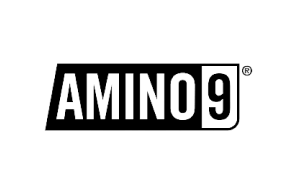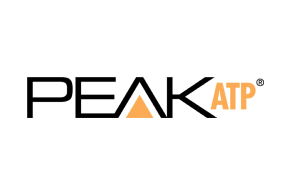Thinking back to the days when ephedrine was legal. people used to take some crazy doses which in part may...

BUILD MUSCLE
BUILD MUSCLE
Building muscle is the process of increasing the size and strength of your muscles. It is a famous health goal for people who want to improve their physical appearance, strength, and endurance.
Specialty
Ingredients
Specialty Ingredients
Goal OVERVIEW
This is a no-brainer, and the goal itself couldn’t be clearer, but there are certain considerations to think about. Building muscle takes time, effort, and consistency, but it is a rewarding goal. With hard work and dedication, you can achieve your muscle-building goals and improve your overall health and fitness over time. Critical to the process is consistency; proper nutrition, rest, and supplementation can also make a big difference. However, it is important to note that muscle building should not be done in an unhealthy way.
What You Should Know
In pursuing physical excellence, one’s enthusiasm can often result in injury and setbacks. It’s imperative to heed the subtle cues your body offers. The rhythm of progress isn’t solely measured by pushing your limits but also by nurturing the dialogue your body engages in. Recognizing when to slow down and recalibrate is a testament to true strength. As stated, overstepping boundaries can lead to setbacks, while mindful exercise fosters longevity. Remember, the symphony of achievement is composed not just of triumphant surges but also of harmonious pauses. Listen keenly, respect your body’s language, and embark on a journey where well-being walks hand in hand with aspiration.
FOOD FOR THOUGHT
For decades, the use of anabolic steroids and other exogenous hormones has succeeded, albeit frequently accompanied by a cost. When utilized without supervision, they can pose dangers and lead to many health issues. These substances should never be considered, let alone used, without seeking advice from a qualified healthcare provider. Such professionals will guarantee the monitoring of all necessary blood work. In the present day, we are presented with a multitude of supplement ingredients clinically validated to provide safe support for muscle-building objectives. For further insights, explore GenMag.com.

SHAGANDHA® BY SABINSA
Shagandha® is a standardized powdered extract from the roots of Withania somnifera, commonly known as ashwagandha. Shagandha® offers various health benefits, including reducing stress, anxiety, and insomnia while improving cognitive function, reducing inflammation, and boosting the immune system. It is available in capsules, powders, and teas and is often used in herbal mixtures. Considered to be a breakthrough Adaptogenic.
Sponsored Content
FAQ
Building muscle, also known as muscle hypertrophy, involves effective training, proper nutrition, and adequate recovery.
Here’s a comprehensive guide on the best way to build muscle:
1. Strength Training:
- Focus on compound exercises that target multiple muscle groups, such as squats, deadlifts, bench presses, rows, and overhead presses.
- Include free weights (dumbbells, barbells) and machines to provide a variety of stimuli to your muscles.
- Gradually increase the resistance (weight) you lift over time to continually challenge your muscles.
2. Progressive Overload:
- One of the most important principles for muscle growth is progressive overload. This means gradually increasing the stress on your muscles by lifting heavier weights, increasing repetitions, or adjusting other variables.
3. Resistance and Reps:
- Aim for a moderate rep range of 6-12 repetitions per set to promote muscle growth. Higher reps (15-20) can also be effective for muscle endurance.
4. Volume and Frequency:
- Adequate volume (total sets and reps) and frequency (how often you train a muscle group) are crucial for muscle growth. Aim for 3-5 sets per exercise and train each muscle group 2-3 times weekly.
5. Rest and Recovery:
- Allow sufficient rest between sets to lift with proper form and intensity. Adequate sleep is essential for muscle recovery and growth.
6. Nutrition:
- Consume a balanced diet with sufficient calories to support muscle growth. Focus on lean protein sources, complex carbohydrates, healthy fats, and various fruits and vegetables.
- Aim for a slight calorie surplus (more calories consumed than burned) to provide the energy needed for muscle building.
7. Protein Intake:
- Protein is crucial for muscle repair and growth. Aim for about 1.2 to 2.0 grams of protein per kilogram of body weight daily.
8. Carbohydrates:
- Carbohydrates provide energy for your workouts and help replenish muscle glycogen stores. Include complex carbohydrates like whole grains, fruits, and vegetables.
9. Healthy Fats:
- Include sources of healthy fats, such as avocados, nuts, seeds, and fatty fish, to support overall health and hormone balance.
10. Hydration:
- Stay hydrated to support muscle function, energy levels, and overall performance.
11. Post-Workout Nutrition:
- Consume a combination of protein and carbohydrates after workouts to aid muscle recovery and replenish glycogen stores.
12. Consistency:
- Consistency is key. Stick to your training program and nutrition plan over the long term to see significant muscle growth.
13. Limit Cardiovascular Training:
- While some cardiovascular exercise is essential for overall health, excessive cardio can hinder muscle gains. Focus on shorter, high-intensity cardio sessions if needed.
14. Recovery Techniques:
- Incorporate strategies like foam rolling, stretching, and mobility to aid muscle recovery and prevent tightness.
Remember that building muscle takes time and dedication. Consult with a fitness professional or personal trainer to design a customized workout program that aligns with your goals and individual needs.
The amount of protein you need to build muscle depends on various factors, including your age, gender, activity level, training intensity, and overall goals.
Protein is essential for muscle repair and growth, but the exact protein requirement can vary from person to person. Here are some general guidelines:
- Recommended Dietary Allowance (RDA): The RDA for protein is set at 0.8 grams per kilogram of body weight per day for sedentary individuals. However, this amount may be insufficient for those looking to build muscle.
- Higher Protein Intake for Muscle Building: Many experts recommend a higher protein intake for individuals actively engaging in resistance training and aiming to build muscle. Common recommendations range from 1.2 to 2.0 grams of protein per kilogram of body weight daily.
While protein consumption is a critical factor in muscle building, it’s just one part of the equation. Adequate strength training, proper nutrition, rest, and overall lifestyle choices are crucial in achieving your muscle-building goals. If you’re uncertain how much protein to consume, consulting a registered dietitian or nutrition expert can help you create a nutrition plan tailored to your needs.
The best exercises for building muscle are compound exercises that target multiple muscle groups simultaneously. These exercises are highly practical for stimulating muscle growth and increasing overall strength. Incorporating a variety of these compound movements into your workout routine can help you achieve balanced muscle development.
Here are some of the best exercises for building muscle:
- Squats: Squats are a fundamental compound exercise primarily targeting the quadriceps, hamstrings, and glutes. They also engage the core and lower back muscles for stability.
- Deadlifts: Deadlifts work the muscles of the lower back, glutes, and hamstrings, and also engage the upper back, forearms, and grip strength. They are excellent for building overall strength.
- Bench Press: The bench press is a chest-dominant exercise that targets the pectoral muscles, anterior deltoids, and triceps. It’s a cornerstone of upper-body strength training.
- Overhead Press (Shoulder Press): This exercise targets the shoulders’ deltoid muscles and engages the triceps and upper back for stability.
- Pull-Ups/Chin-Ups: Pull-ups and chin-ups are great for developing the upper back, including the latissimus dorsi muscles (lats) and biceps. They also engage the core and shoulders.
- Rows: Rows come in various forms (barbell rows, dumbbell rows, cable rows) and target the muscles of the upper back, including the rhomboids, trapezius, and rear deltoids.
- Dips: Dips primarily work the chest, triceps, and shoulders. They can be performed using parallel bars or on a dip station.
- Lunges: Lunges effectively target the quadriceps, hamstrings, and glutes. They also challenge balance and stability.
- Leg Press: The leg press machine is a compound exercise focusing on the lower body muscles, including the quadriceps, hamstrings, and glutes.
- Romanian Deadlifts (RDLs): RDLs emphasize the hamstrings and glutes. They involve bending at the hips while keeping the knees slightly bent.
- Cleans and Snatches: These Olympic lifts are explosive full-body movements that engage multiple muscle groups, including the legs, back, shoulders, and core.
- Push-Ups: Push-ups work the chest, shoulders, and triceps. They can be modified to suit different fitness levels.
Remember that proper form and technique are crucial to prevent injuries and maximize the effectiveness of these exercises. If you’re new to strength training, consider working with a qualified personal trainer to ensure you’re performing these exercises correctly. Additionally, including accessory exercises that target specific muscle groups can help you achieve a well-rounded and balanced physique.
A balanced diet that provides adequate nutrients and calories is essential when building muscle. While supplements can complement your nutrition and fitness routine, they are not a substitute for proper nutrition and training.
That said, here are three commonly used supplements accepted as industry standards that can support muscle-building efforts:
1. Whey Protein:
- Whey protein is a fast-digesting protein derived from milk. It’s rich in essential amino acids, especially branched-chain amino acids (BCAAs), essential for muscle protein synthesis and recovery.
- Whey protein supplements can be convenient for meeting your protein needs, especially after workouts when protein intake is crucial for muscle repair and growth.
2. Creatine:
- Creatine is a naturally occurring compound found in small amounts in certain foods and synthesized by the body. It helps supply energy to muscles during high-intensity, short-duration activities like weightlifting.
- Creatine supplementation has been shown to enhance muscle strength, power, and overall performance during resistance training. It may also contribute to muscle growth by increasing water content in muscle cells.
3. Branched-Chain Amino Acids (BCAAs):
- BCAAs, which include leucine, isoleucine, and valine, are essential amino acids that play a crucial role in muscle protein synthesis and recovery.
- During intense training sessions, BCAA supplements are often used to support muscle growth and reduce muscle breakdown.
Remember that while these supplements can offer benefits, they work best when integrated into a comprehensive approach that includes a well-balanced diet, proper hydration, regular strength training, and sufficient rest.
Consulting a healthcare professional or a registered dietitian before adding supplements to your routine is advisable, especially if you have any underlying health conditions or are taking medications. Additionally, individual needs and responses to supplements can vary.
Related Videos
Articles
In the world of dietary supplements, one name that has been making waves, especially in men's health, is Testofen® by Gencor...
Discover the patented Nitrosigine® complex, clinically proven to enhance nitric oxide production, improve blood flow, and boost mental focus and...

















